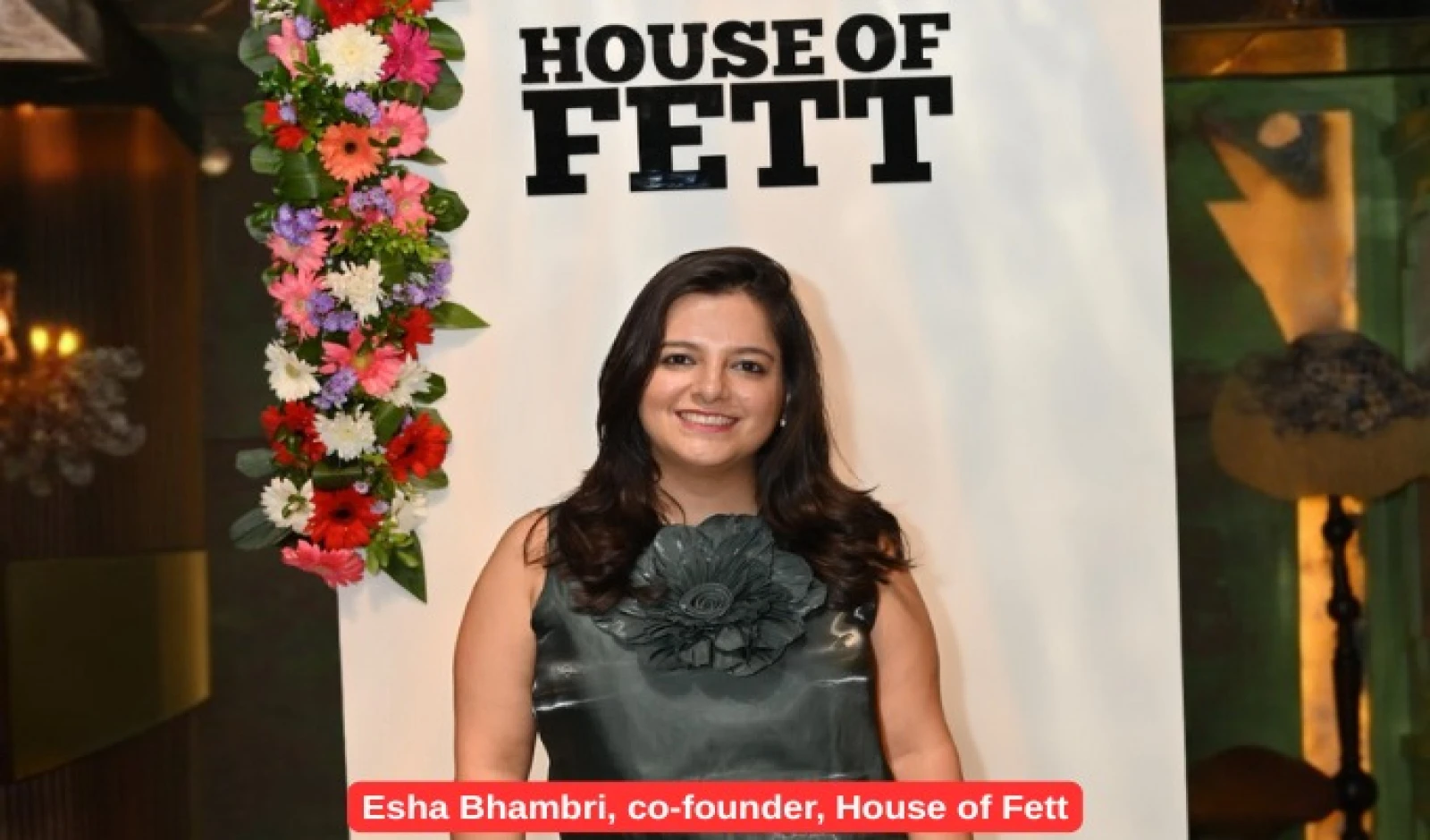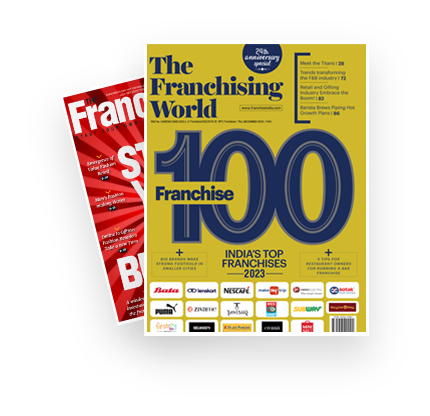
- Tell us a bit about your entrepreneurial journey. When and how did House of Fett start? What was the inspiration?
House of Fett was co-founded by me and Abhinav Gupta. We come from very different but complementary backgrounds. I graduated from NIFT Delhi and went on to complete my post-graduation at the London College of Fashion. My experiences in global retail shaped my fashion sensibility. Abhinav, on the other hand, is an MBA with specializations in Marketing and Finance, and he brought in a strong focus on operations, technology, and scalability.
The idea for House of Fett came from a clear market gap we noticed—there just wasn’t enough runway-inspired fashion tailored for Indian body types, especially at a price point that felt premium yet accessible. That insight really resonated with us, and it quickly clicked with our target audience: the modern Indian woman. That’s how House of Fett began—and grew into a multi-store brand faster than we could have imagined.
- What is the USP of House of Fett and how has the journey been?
When we opened our first store at DLF Saket in 2018, our vision was clear: to create bold, individualistic designs that were still functional and wearable in the Indian context. Our USP lies in delivering fashion-forward styles that suit Indian body types and climates—without the designer price tag.
Being a retail-first brand helped us build trust and credibility. Today, we have more than 15 stores across prime locations like Khan Market, Kala Ghoda, and DLF Mall of India. Every store reflects our brand ethos—contemporary, design-led fashion, backed by strong operational discipline and customer loyalty.
- How was the transition from offline to online, and why was it necessary?
We started out as an offline-first brand, placing a huge emphasis on the physical shopping experience. But when the pandemic hit, we knew we had to adapt. That’s when we accelerated our shift to digital—launching our own e-commerce platform and joining major fashion marketplaces.
Today, online channels contribute 40% of our revenue, and 70% of that comes directly from our own website. The transition was smooth because we already had a loyal customer base and strong brand recognition, thanks in part to celebrity endorsements. Going digital wasn’t just necessary—it became a strategic move to stay relevant and expand our reach.
- What are the pros and cons of an omnichannel approach?
For us, omnichannel has been a game-changer. It allows customers to connect with the brand wherever they are—be it in a store or online. Physical stores give them the chance to touch, feel, and try the clothes, while our digital presence offers unmatched convenience and reach, especially outside metro cities.
The two channels support each other beautifully. We get better engagement, higher conversion rates, and more insights for decision-making. Of course, managing inventory and ensuring consistent brand experiences across all platforms is challenging, but the upside—greater reach, better loyalty, and scalable growth—makes it all worth it.
- What is your management mantra?
Our management philosophy is a mix of creativity and clarity. As young entrepreneurs, we trust our instincts but always validate them with data. We’ve built a flat, collaborative, and design-led company culture that doesn’t compromise on operational discipline.
Abhinav and I stay deeply involved in every part of the business but also empower our teams to take ownership. It’s important to us that every decision is both purpose-driven and scalable.
- What are the brand’s expansion plans for FY26?
We’re looking to expand aggressively in FY26. Our goal is to enter high-potential markets like Punjab, Kolkata, and Raipur while continuing to strengthen our presence in key cities like Hyderabad, Bangalore, and Mumbai.
We plan to grow to 25 company-owned stores and add 10 franchise outlets. This hybrid model allows us to maintain brand consistency while gaining the agility of local partners. The strategy is to combine strategic location planning with local expertise to fuel sustainable growth.
- Why did the brand enter franchising, and how has the journey been?
Franchising was a strategic step to tap into Tier 1 and Tier 2 cities without diluting the brand experience. By partnering with local entrepreneurs who are passionate about fashion, we’ve been able to take House of Fett to new audiences while keeping quality and presentation intact.
Our franchise partners bring invaluable local insights and serve as true brand ambassadors. With strong backend support and standardized visual merchandising, franchising has become a key pillar in our growth strategy.
- Where do you see House of Fett in five years?
In five years, I see House of Fett as a leading name in India’s premium fashion landscape, with a strong presence in high-end retail spaces across the country. We’re targeting an annual revenue of INR 300 crore, and with our current 68% year-on-year growth, we’re well on our way.
We’re also planning to diversify into menswear and kidswear under the Fett Brands Pvt. Ltd. umbrella. These new verticals will reflect the same design-first ethos that defines House of Fett, while expanding our reach to a wider customer base.
- How has the Indian apparel market evolved over the last five years?
The Indian apparel market has transformed significantly. Increased exposure to global trends—thanks to social media, travel, and e-commerce—has made today’s consumers more aware, style-conscious, and demanding of international quality with Indian relevance.
To succeed in this market, brands must strike a delicate balance between global aesthetics and local sensibilities. That’s exactly where House of Fett positions itself—delivering globally appealing fashion that’s designed specifically for Indian lifestyles and body types.
- How will the apparel market evolve in the next five years?
Looking ahead, I believe the market will become even more experience-driven and design-focused. Consumers will gravitate towards brands that offer authenticity, storytelling, and seamless experiences across all touchpoints.
Retail stores will evolve from being purely transactional to offering immersive brand experiences. We’re already moving in that direction—our flagship at Pacific Mall isn’t just a store; it’s a spatial fashion gallery that brings our design philosophy to life.
The future will belong to homegrown brands that can think globally, look premium, and speak directly to the aspirations of the evolving Indian consumer.
- How has technology been integrated into House of Fett’s growth?
Technology has been core to our growth story. We’ve built a fully integrated omnichannel system that connects inventory, CRM, and customer data across all our stores, website, and marketplaces.
We use AI-driven analytics to track footfall, conversion rates, and dwell time in real time. These insights help us improve store layouts, staff deployment, and visual merchandising. Our custom dashboards give us a 360-degree view of sales and performance across channels, enabling smarter decisions in product curation and marketing. At House of Fett, technology isn’t just a support function—it’s part of our DNA, driving innovation, agility, and scale.

